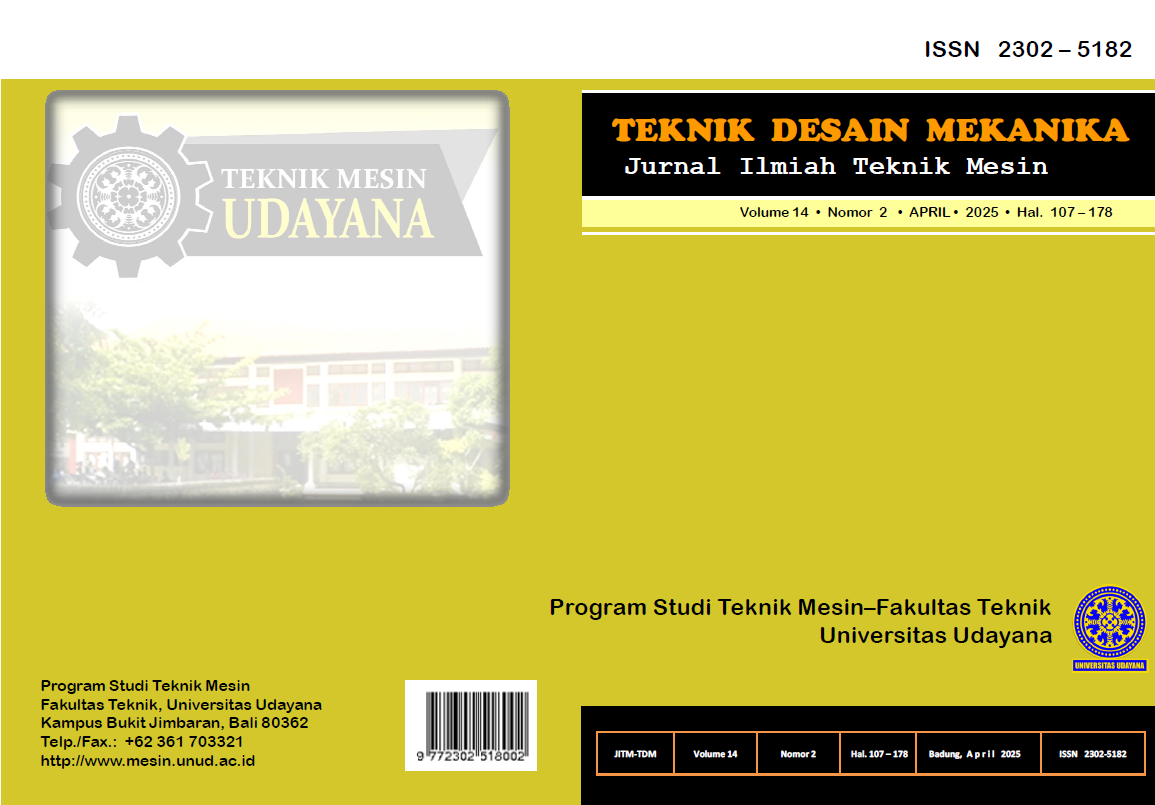Performance Comparison of Fluidized Bed and Fixed Bed Incinerators for Co-firing Coal and Refuse Derived Fuel
Abstract
This study aims to analyze the performance of fluidized-bed and fixed-bed incinerators in the co-firing process using a fuel mixture of coal as the primary fuel and refuse-derived fuel (RDF) obtained from TPST Kesiman Kertalangu Denpasar as a substitute fuel. The study was conducted by burning RDF and coal with a total fuel mass of 140 grams and a fuel composition of 10% RDF + 90% coal, with silica sand used as the bed material. Air was supplied using a compressor, with the air velocity of fluidized-bed incinerator set at 9 m/s and air velocity of fixed-bed incinerator at 6 m/s. Heat was generated by the reactor and controlled through an electric control panel up to 800℃. The results of the study showed that the fluidized-bed incinerator had a more even temperature distribution and the combustion efficiency of the fluidized-bed incinerator combustion process of 83.32% was higher than the fixed-bed incinerator at 48.09%. Additionally, the emission gas composition from the fluidized-bed incinerator for CO, CO₂, CH₄, CnHm, H₂, and O₂ was recorded as 3.31%, 0.39%; 0.08%; 0.96%; 20.7% respectively. Meanwhile, the emission gas composition from the fixed-bed incinerator was recorded as 1.02%; 2.25%; 0.86%; 0.16%; 1.31%; and 14.5% respectively. The emissions gas results from the fluidized-bed incinerator demonstrate a more perfect combustion process compared to the fixed-bed incinerator.


